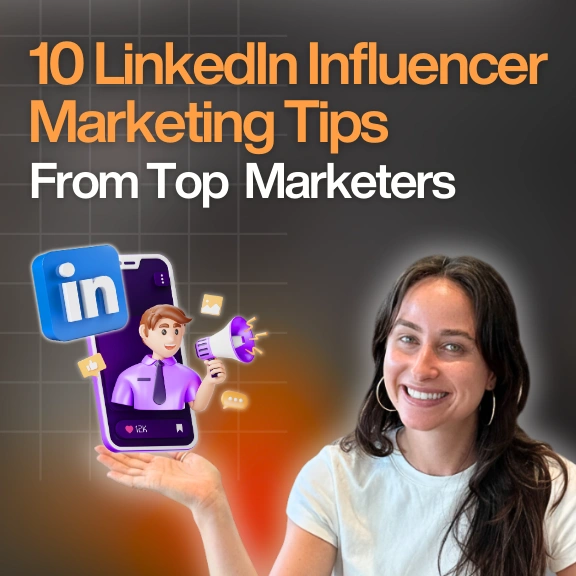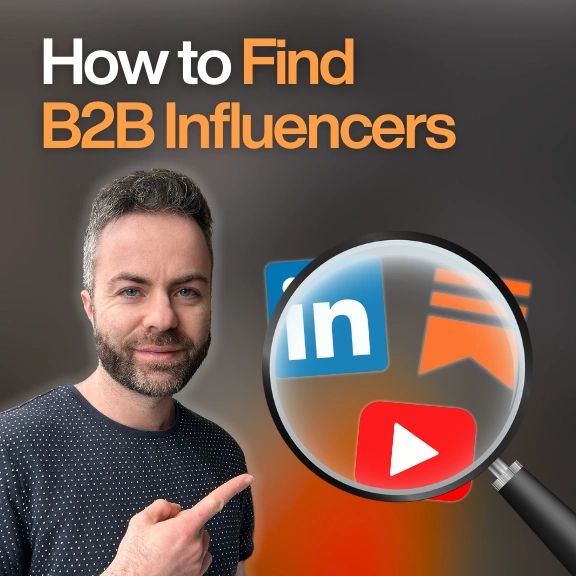Creator Campaings
Discover +10 Million creators across all industries and niches.
Get Al-Powered and activable insights around creator's profiles.
Manage influencers effortlessly at one place.
Reach out to millions of creators directly on the platform.
Social Media Insights
Favikon for Creators
Grow as a creator on social media
Grow
Get Noticed
Blogs Articles
Methodology & Rankings
About Favikon, rankings, tools & much more.
Methodology
The recipe behind Favikon's viral & coveted rankings.
Free tools to power your influencer marketing workflows.
The people & mission that fuels Favikon.
Get access to all Favikon rankings.
Become a select Favikon Partner
Become a select Favikon Affiliates
Featured Rankings
Highlighting the most influential creators on X, shaping global conversations and trends
Showcasing top creators in the sales niche, driving innovation and engagement across the U.S.
Recognizing global leaders on LinkedIn for their impactful thought leadership and professional insights.
The place to talk creator economy, together


B2B Influencer Marketing Case Study: Inside Anthropic’s Influencer Marketing Program
This case study looks at how Anthropic set up its B2B influencer marketing program. It covers what they did, how they worked with influencers, and the results.
.png)


Megan Mahoney is an influencer marketer who uses data and real-world case studies to uncover what actually drives results in influencer campaigns. With a background in content marketing and over a decade of experience helping brands grow through strategy and storytelling, she brings a thoughtful perspective to creator partnerships and is deeply engaged in the evolving creator economy.
Check Brand Deals
B2B Influencer Marketing Case Study: Inside Anthropic’s Influencer Marketing Program
I analyzed Claude’s influencer marketing program on LinkedIn to answer questions like:
- Do they hire micro or macro influencers?
- How do sponsored posts perform compared to a creator’s average post performance?
- How many sponsored posts does Anthropic do with each influencer?
- What audiences did they target?
- How do they frame the creative messaging?
In this post, we answer all of these questions with data.
To collect the data, I looked at all 50 LinkedIn posts marked as “brand partnership” and contained #ClaudePartner.
Also, this is current data. All of these posts are under two months old.
While this might not be a complete data set (i.e., all of the influencer campaigns they’ve done on LinkedIn), it is sufficient to illuminate patterns.
Here’s what I learned.
#1. The majority (61%) of sponsored creators were mid-tier influencers (50,000 to 200,000 followers)
Anthropic sponsored 31 creators to publish the 50 sponsored posts identified, and most creators had between 50,000 and 200,000 followers.
Here’s the full breakdown:
- 5 had between 7,000 and 50,000 followers
- 8 had between 50,000 and 100,000 followers
- 5 had between 100,000 and 150,000 followers
- 6 had between 150,000 and 200,000 followers
- 1 had between 200,000 followers and 250,000 followers
- 0 had between 250,000 followers and 300,000 followers
- 0 had between 300,000 followers and 350,000 followers
- 3 had between 350,000 to 400,000 followers
- 2 had between 400,000 and 450,000 followers
- 1 had over 450,000 followers

Of course, follower count isn’t everything so we also looked at comment counts.
The most common average comments per post (51% of creators) was between 25 to 200.
- 7 had between 9 and 25 comments per post
- 4 had between 26 and 49 comments per post
- 7 had between 50 and 99 comments per post
- 3 had between 100 and 149 comments per post
- 3 had between 150 and 199 comments per post
- 1 had between 200 and 249 comments per post
- 1 had between 250 and 299 comments per post
- 1 had between 300 and 349 comments per post
- 2 had between 350 and 399 comments per post
- 1 had between 400 and 449 comments per post
- 1 had over 450 comments per post

Whether you prioritize follower count or engagement, it appears that Claude prioritized mid-tier to macro creators. (Remember that LinkedIn tends to have lower average engagement/follower counts compared to other social platforms like Instagram and YouTube.)
There are pros and cons to both macro and micro influencers.
Most notably, macro influencers have more reach, but the depth of trust pales compared to micro influencers.
However, Claude is a relatively affordable product (the most common pricing tiers are $17 and $100 per month), so the purchase decision doesn't require as much consideration as an enterprise product. Therefore, depth of trust isn't as critical – people just need to know the product exists and how it works.
Additionally, Claude's target audience is broad, encompassing everyone from executives to college students.
Therefore, targeting macro influencers with large audiences makes sense for Claude – even if the depth of trust is minimal.
On the other hand, if you’re selling a B2B enterprise product to executives, working with micro influencers with a small following of high level executives who deeply trust their recommendations might make more sense.
#2. Most sponsored posts (68%) underperformed against the creator’s average comments per post.
8,373 was the total average comments per post across all creators combined (and for creators who published two or three sponsored posts, we included them two or three times, respectively, in that total).
Yet 6,178 was the total comments earned across all of Claude’s sponsored posts.
This data shows that sponsored posts only earned about 73.8% of the average comments per post.
In other words, sponsored posts underperformed from a content perspective by about 26% compared to the average.

A few factors can cause your sponsored post to underperform the creators' average.
The most obvious factor is if the content is primarily promotional and doesn't show the audience how to solve a problem. In other words, the content is simply low quality.
The second common factor that can cause a sponsored post to underperform is a low percentage of audience members who fit your ICP.
Even if you're working with a creator in the same niche, only a percentage of their audience might fit your ICP.
Let me explain.
Say you sell exclusively enterprise SEO products. You might sponsor an SEO expert, yet only about 50% of their audience are enterprise SEO professionals.
Therefore, if your sponsored post specifically discusses enterprise SEO tactics, it will only be relevant to half of the SEO professionals in that creator's audience and will likely "underperform" (from an engagement perspective) by about 50%.
That's fine – you only need the attention of your ICP.
However, it is important to consider this when forecasting influencer campaign performance and adjust engagement expectations accordingly.
Also, consider the audience/ICP match when budgeting because the creator will still charge for the value of its entire audience.

In Anthropic's case, their product is relevant to a very wide audience, so the sponsored content tended to be applicable to most (about 73.8%) of the sponsored creators' audiences.
However, you'll still notice that macro influencers typically underperformed (from an engagement perspective) more frequently.
#3. Most creators (58%) were hired for 2 sponsored posts
I found a total of 31 creators and 50 sponsored posts (labeled as brand partnerships).
Here’s the breakdown:
- 12 creators hired for 1 post
- 18 creators hired for two posts
- 1 creator hired for three posts
There’s always a debate between:
- Hiring many creators for a one off promotion
- Hiring few creators and building a long term relationship
There’s an argument for both sides.
If you only hire creators for a one off sponsored post, you INCREASE impressions, but potentially REDUCE conversion rates.
Additionally, you're probably only reaching a fraction of that creator's audience with a single post.
On the other hand, for each additional post you do with a creator, you decrease NEW impressions, which can result in a higher conversion RATE but potentially decrease TOTAL conversions.
The best choice likely depends on your offer.
Your conversion RATE will INCREASE as the upfront investment of the offer DECREASES.
So if you offer a free tool or freemium version of your product (like Claude), going broad and hiring many creators with significant influence to do one off sponsored posts might make sense.
If you’re offering an enterprise product, prospects won’t convert on their first interaction with your product. So doing repeat sponsored posts with one creator can increase a prospect’s touchpoints with your product and therefore result in higher conversions.
I’m also sure that the next question is “Well, how long should I wait before doing another campaign?”
Well, most of the creators who published multiple posts published them within a few weeks of each other.
#4. The primary creative demonstrated a specific use case for Claude
The primary pain point with most AI content is that people don’t really understand HOW to use AI.
This is true for many SaaS products.
For most products, the best way to attract the right attention and make the conversion a no-brainer is to start with a pain point and then illustrate how the product solves that problem.
For example, the pain point here is “how to negotiate a raise.”
Then, she shows how to do that by using Claude:

Now, some of the sponsored posts start with framing how they use Claude specifically.
For example, here's the top performing sponsored post (by comment count) from Charlie Hills.
It's his workflow with a specific prompt.

Below the post is also a screenshare video:

This framing works for them because Claude already has so much brand awareness, and most people scrolling on LinkedIn have probably heard of the product.
But using the product name in the hook likely won't work for smaller companies that scrollers have never heard of.
For example, would you pause for a hook like "5 Ways to Use Verola!"
You probably wouldn't.
That's because it's a name you've never heard of (I made it up).
Recommended tools
Find LinkedIn influencersAnalyze your own LinkedIn profileAnalyze competitors' LinkedIn profiles
#5. Most sponsored creators had diverse audiences
Claude has a very wide audience – their customers range from CEOs and executives to interns and junior professionals.
So going broad made sense for them.
It was difficult to perfectly categorize each creator, but here’s a rough breakdown of the most common niches of creators they hired:
- 5 were primarily AI gurus
- 3 were primarily personal branding/LinkedIn growth experts
- 4 were primarily Career coach experts
- 4 were personal growth
- 4 were product designers/developers
- 3 were engineers
- 7 were other

But be warned that targeting wide niche creators isn’t always the best idea – even if your customer base is very diverse.
Instead, look at where the majority of your REVENUE comes from.
For example, you might find that the majority of revenue comes from a handful of enterprise accounts.
In that case, it might make more sense to do a few campaigns with more niche creators that have an audience of C suite executives – even at a higher CPM.
Yet my guess is that because Claude’s potential customer base is so large (i.e., every professional and even the general public, like moms), the average user still makes up a larger percentage of Claude’s revenue than their enterprise plans.
#6. The content topics also target pain points with a large TAM.
“How to be more productive” is a problem millions of people face.
On the other hand, “how to improve your resume” is a narrower problem.
There are still a lot of people who need to improve their resume.
But it’s first limited to professionals – still a large market, but not as large as the people facing productivity challenges.
Secondly, only a select handful of people are currently in the job market. So that further narrows the percentage of people who will find the content useful.
As you’re working with creators, ask them to think about the TAM of the product use case they’ll highlight in the sponsored post.
This is a great way to maximize engagement while still keeping the content relevant to their ICP.
I noticed that Claude did a fairly good job of this.
For example, this post by Will McTighe targets a very large TAM – people who have made mistakes at work (basically, every employee on LinkedIn).
(Side note: Will was the one creator Anthropic hired for three sponsored posts – so it probably converted very well too!).

I also noticed that many of the top performing posts were philosophical or opinionated/contrarian takes on hot topics. These types of posts can also generate a lot of engagement, though I suspect that they probably don’t convert as well as use case posts.
#7. Leverage influencers to promote new partnerships and features
Finally, I noticed that most of the influencer campaigns promoted their new Google Workspace integration.

Especially for SaaS and AI products where there’s plenty of competition with similar solutions, asking influencers to highlight these key differentiators and new features is a great way to set your brand apart.
How To Take Action Today
B2B influencer marketing is becoming an increasingly important channel for many SaaS and AI companies.
Paid ads can get your brand in front of your target audience immediately, but you’ll still have to spend time building trust before prospects will convert.
On the other hand, organic content can build trust, but it takes a long time.
Influencer marketing is the best of both worlds – you get in front of your target audience immediately and you’re essentially leasing the credibility the influencer has spent years creating with its audience.
However, unlike B2C, B2B influencer marketing is still in its infancy, and finding B2B creators and managing the relationships can be challenging.
That’s why Favikon exists. It’s the first creator marketplace that makes it easy to find B2B influencers on LinkedIn.
You can also manage the entire relationship within the Favikon platform, from creator communication and negotiation to payment and performance tracking.
You can get started for free today.
Also See 👀
🏆 THE ULTIMATE GUIDE TO B2B INFLUENCER MARKETING IN 2025
FIND OUT WHO LEADS IN EACH COUNTRY OR NICHE
HOW DOES FAVIKON RANK INFLUENCERS?
Related Articles
See all the articles
Find, analyze, and contact top influencers from a 10M+ creator database on Instagram, Linkedin, Youtube, Tiktok, and X to grow your business.
Favikon is an influencer marketing sofware. We are not affiliated, associated, endorsed by, or in any way officially connected with the Tiktok, Youtube, LinkedIn or Instagram brand, or any ot ifts subsidiaries or its affliates. The names "Tiktok", "Youtube", "LinkedIn" and "Instagram" as well as related names, marks, emblems and images are registered trademarks of their respective owners.
Copyright © 2025 Favikon | All Rights Reserved














.png)
